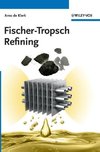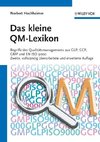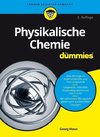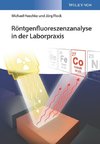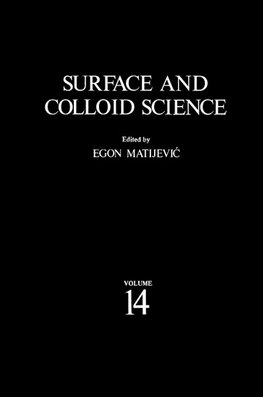
-
 Anglický jazyk
Anglický jazyk
Surface and Colloid Science
Autor: R. J. Good
1. Single Aerocolloidal Particle Instrumentation and Measurement.- 1. Introduction.- 1.1. Millikan's Balanced Drop Method.- 1.2. Limitations of the Millikan Oil Drop Experiment.- 2. Applications of Millikan's Method.- 2.1. Droplet Evaporation Measurements.-... Viac o knihe
Na objednávku, dodanie 2-4 týždne
48.39 €
bežná cena: 54.99 €
O knihe
1. Single Aerocolloidal Particle Instrumentation and Measurement.- 1. Introduction.- 1.1. Millikan's Balanced Drop Method.- 1.2. Limitations of the Millikan Oil Drop Experiment.- 2. Applications of Millikan's Method.- 2.1. Droplet Evaporation Measurements.- 2.2. Light-Scattering Measurements.- 2.3. Determination of Photo-Ionization Potentials.- 3. Electrostatic Balancing with Feedback Control.- 3.1. The Stability of the Electrostatic Balance.- 3.2. The Nonuniform Electric Field.- 3.3. Applications of the Electrostatic Balance.- 4. The Electrodynamic Balance.- 4.1. The Electric Field.- 4.2. Stability Characteristics.- 4.3. Applications of the Electrodynamic Balance.- 5. Other Particle Suspension Devices.- 5.1. Ion Containment.- 5.2. Magnetic Suspension.- 5.3. Optical Levitation.- 6. Summary.- References.- 2. Multilayer and Monolayer Adsorption from Liquid Mixtures of Nonelectrolytes on Solid Surfaces.- 1. General Considerations.- 1.1. Introduction.- 1.2. Fundamental Definitions and Ideas in Liquid Adsorption.- 1.3. Experimental Methods for Studying Liquid Adsorption.- 2. Monolayer Adsorption Model.- 2.1. Introductory Remarks.- 2.2. Classical Thermodynamics of Liquid Adsorption on Homogeneous Surfaces.- 2.3. Adsorption on Heterogeneous Surfaces.- 2.4. Statistical Thermodynamics of Monolayer Liquid Adsorption.- 2.5. Criticism of the Monolayer Adsorption Model.- 3. Multilayer Adsorption Model.- 3.1. Simple Methods for Evaluating the Multilayer Effects in Liquid Adsorption.- 3.2. Relationships for Multilayer Adsorption Obtained from the General Mass-Balance Equation.- 3.3. Quasi-Chemical Model of Multilayer Adsorption.- 3.4. Statistical Thermodynamics of Multilayer Adsorption.- 4. Adsorption from Dilute Solutions.- 4.1. Fundamental Equations Describing Adsorption from Dilute Solutions.- 4.2. Studies of Adsorption from Dilute Solutions by Liquid Adsorption Chromatography.- List of Symbols.- References.- 3. Colloid and Surface Phenomena in Immunology.- 1. The Humoral and Cellular Immune Systems.- 1.1. Components of the Humoral and Cellular Immune Systems and Their Targets.- 1.2. The Humoral Immune System.- 1.3. Antigens.- 1.4. Antigen-Antibody Interactions.- 1.5. The Cellular Immune System.- 1.6. The Phagocytic System.- 1.7. Blood.- 2. Stability of Blood Cells versus Defense against Infectious Agents.- 2.1. Stability of Blood Cells in Blood.- 2.2. Phagocytosis.- 2.3. IgG-Fc-Receptor Interactions.- 2.4. Influence of Cell Shape.- 2.5. Interaction of Phagocytes with Pathogenic and with Nonpathogenic Bacteria.- 2.6. Microbial Defenses against Phagocytosis.- 2.7. Disposal of Aged and Abnormal Cells.- 3. Hemagglutination and Other Types of Red Cell Aggregation.- 3.1. Stability of Blood Cells in Isotonic Water.- 3.2. Hemagglutination with Normal Erythrocytes.- 3.3. Hemagglutination with Modified Erythrocytes.- 3.4. Rouleau Phenomena.- 4. Antigen-Antibody Interactions.- 4.1. AG-AB Bonds.- 4.2. AG-AB Bonds of the van der Waals Type.- 4.3. Electrostatic AG-AB Bonds.- 4.4. Hydrogen Bonds.- 4.5. Dissociation of AG-AB Bonds.- 4.6. Prevention of Formation of AG-AB Bonds: Hysteresis.- 5. Precipitation and Immunodiffusion.- References.- 4. Viscous Sintering of Inorganic Gels.- 1. Introduction.- 2. Viscous Sintering.- 2.1. Physical Principles.- 2.2. Comparison of Models.- 2.3. Viscoelastic Materials.- 3. Colloidal Gels.- 3.1. Flame-Generated Particles.- 3.2. Solution-Generated Particles.- 4. Aerogels.- 5. Xerogels.- 5.1. Structure.- 5.2. Silica Gels.- 5.3. Multicomponent Gels.- 5.4. Hot Pressing.- 5.5. Films.- 6. Conclusions.- References.- 5. Adsorption of Organic Solutes from Dilute Solutions on Solids.- 1. Introduction.- 2. Survey of the Literature Dealing with the Experimental Studies of Solute Adsorption.- 2.1. Adsorption on Activated Carbons.- 2.2. Adsorption on Other Adsorbents.- 3. Survey of Theoretical Approaches Used for Describing the Solute Adsorption Equilibria.- 3.1. Polanyi Adsorption Potential Model.- 3.2. Solvophobic Interaction Model.- 3.3. Langmuir Adsorption Model.- 3.4. Vacancy Solution Theory.- 4. Theoretical Description of Solute Adsorption from Dilute Solutions Involving Adsorbent Heterogeneity.- 4.1. General Considerations.- 4.2. Single-Solute Monolayer Adsorption on Energetically Heterogeneous Solids.- 4.3. Multi-Solute Monolayer Adsorption on Energetically Heterogeneous Solids.- 4.4. Dissociation Effects in Solute Adsorption.- 4.5. Multilayer Effects in Solute Adsorption.- 4.6. Solute Adsorption on Structurally Heterogeneous Solids.- 5. Concluding Remarks.- List of Principal Symbols.- References.- Author Index.
- Vydavateľstvo: Springer US
- Rok vydania: 2011
- Formát: Paperback
- Rozmer: 229 x 152 mm
- Jazyk: Anglický jazyk
- ISBN: 9781461290148

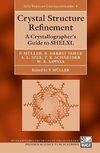


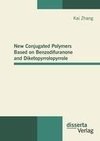
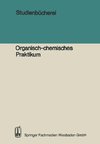
 Nemecký jazyk
Nemecký jazyk 


